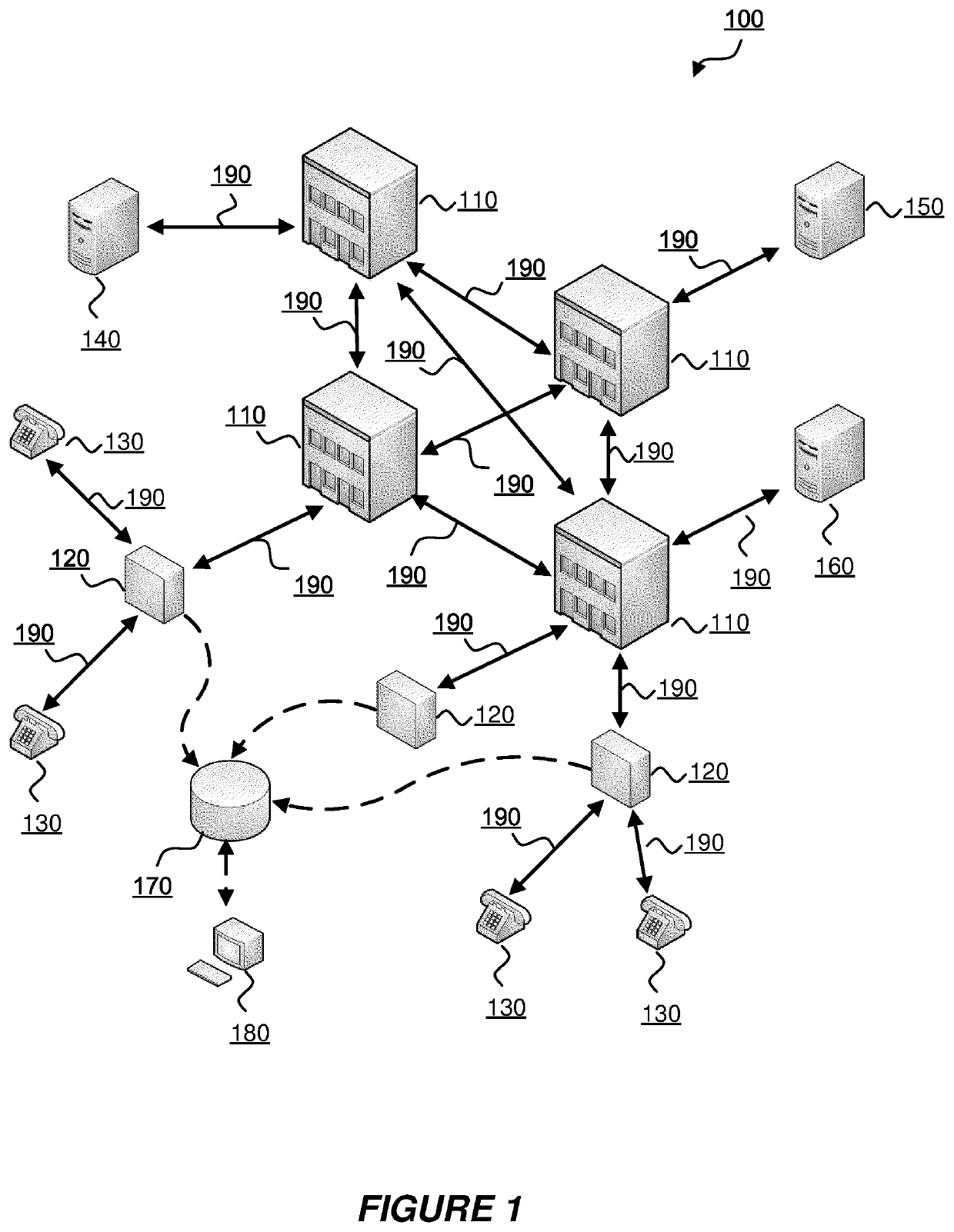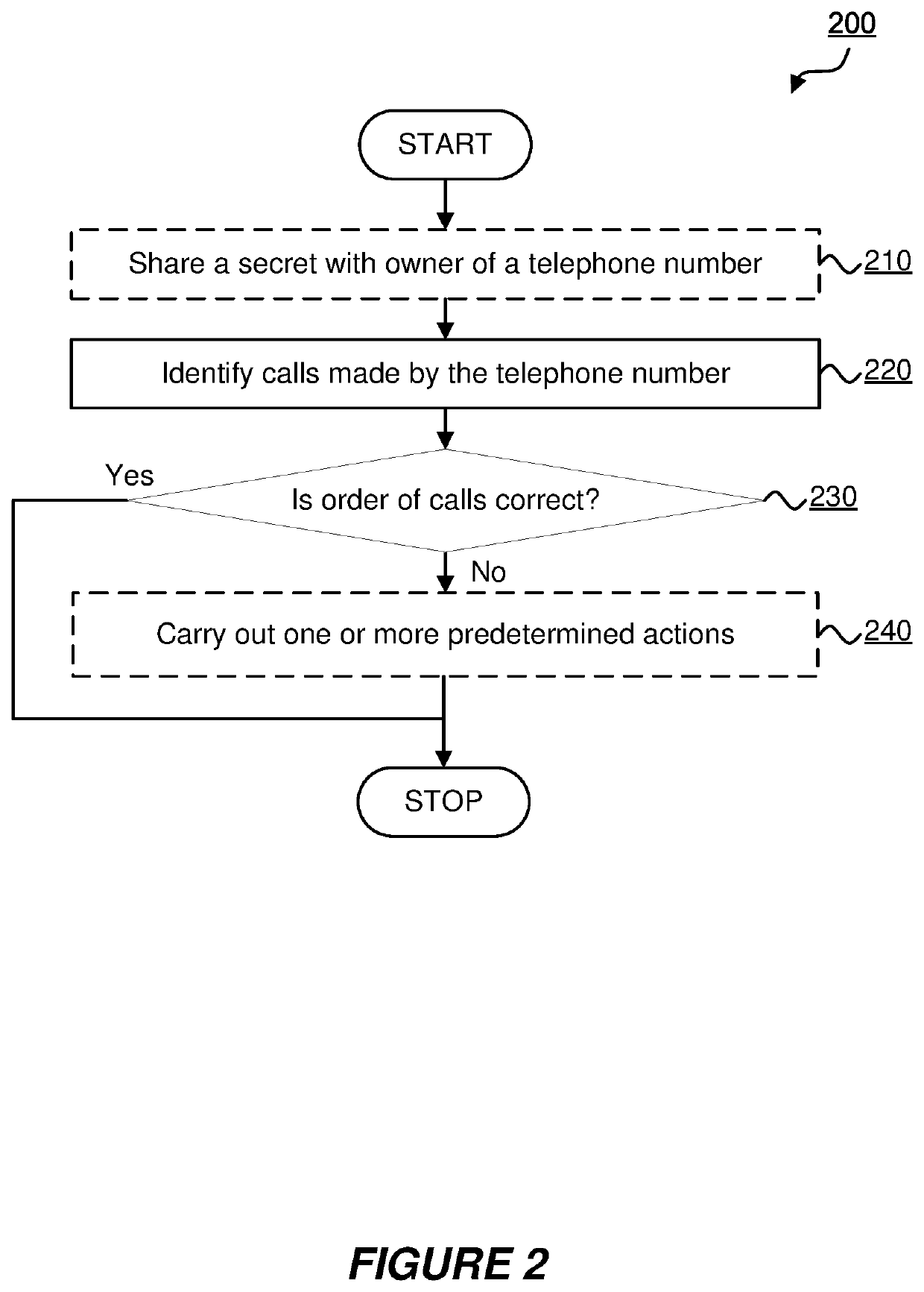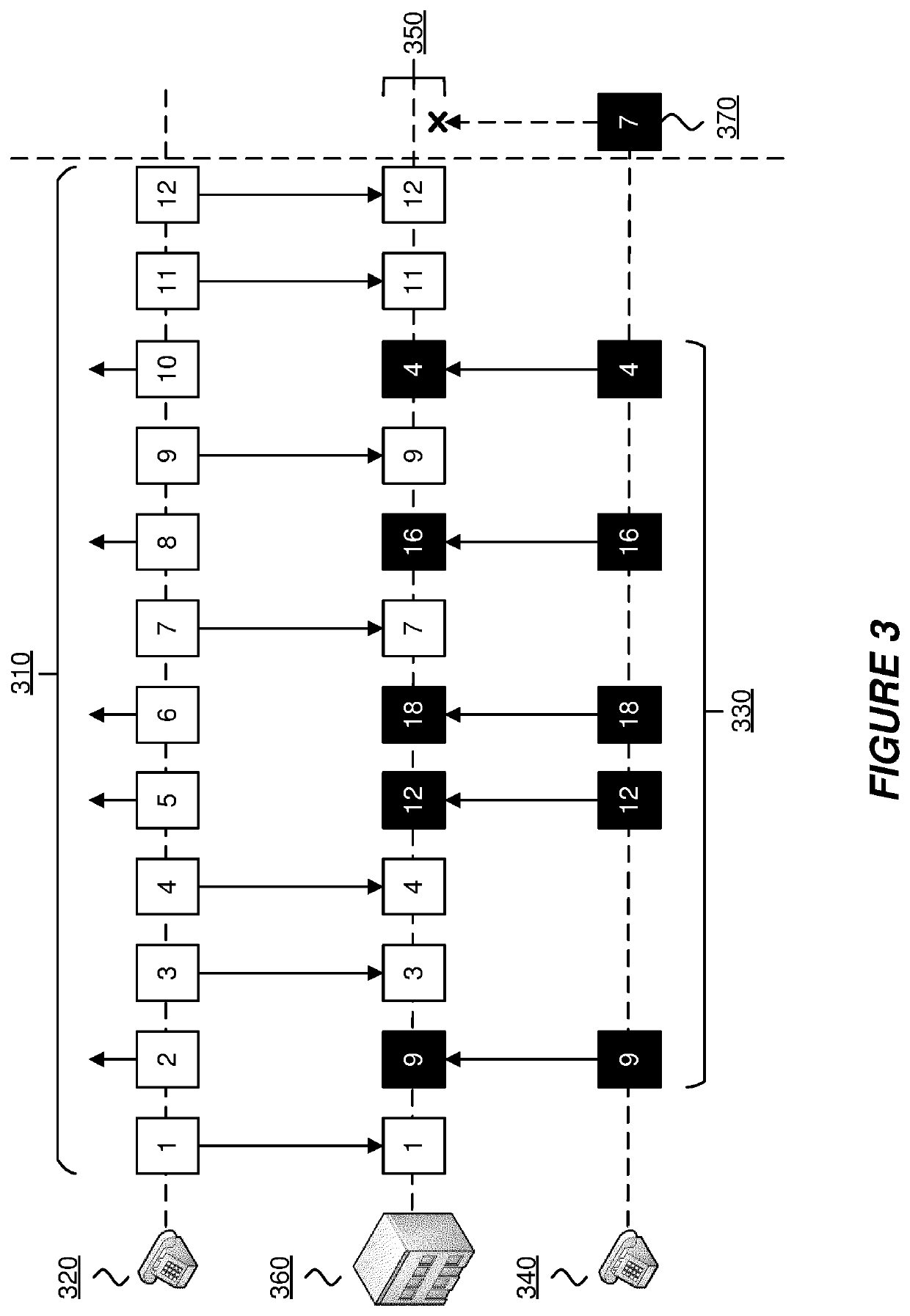Spoof call detection in telephone network
- Summary
- Abstract
- Description
- Claims
- Application Information
AI Technical Summary
Benefits of technology
Problems solved by technology
Method used
Image
Examples
Embodiment Construction
[0022]FIG. 1 is a schematic depiction of an exemplary telephone network 100 within which embodiments of the invention may operate. The exemplary telephone network 100 may also be referred to as a communications network. The exemplary telephone network 100 is a conventional telephone network comprising a plurality of core exchanges 110, a plurality of local exchanges 120, a plurality of customer telephony terminals 130, one or more domestic gateways 140, one or more international gateways 150, one or more voicemail servers 160, one or more call data stores 170 and one or more analyst terminals 180.
[0023]The core exchanges 110 are interconnected by a plurality of communications links 190. Each of the plurality of core exchanges 110 are further connected to one or more local exchanges by further communications links 190 (although, for the sake of clarity, not all of the core exchanges 110 illustrated in FIG. 1 are shown as being connected to local exchanges 120).
[0024]The local exchang...
PUM
 Login to View More
Login to View More Abstract
Description
Claims
Application Information
 Login to View More
Login to View More - R&D
- Intellectual Property
- Life Sciences
- Materials
- Tech Scout
- Unparalleled Data Quality
- Higher Quality Content
- 60% Fewer Hallucinations
Browse by: Latest US Patents, China's latest patents, Technical Efficacy Thesaurus, Application Domain, Technology Topic, Popular Technical Reports.
© 2025 PatSnap. All rights reserved.Legal|Privacy policy|Modern Slavery Act Transparency Statement|Sitemap|About US| Contact US: help@patsnap.com



